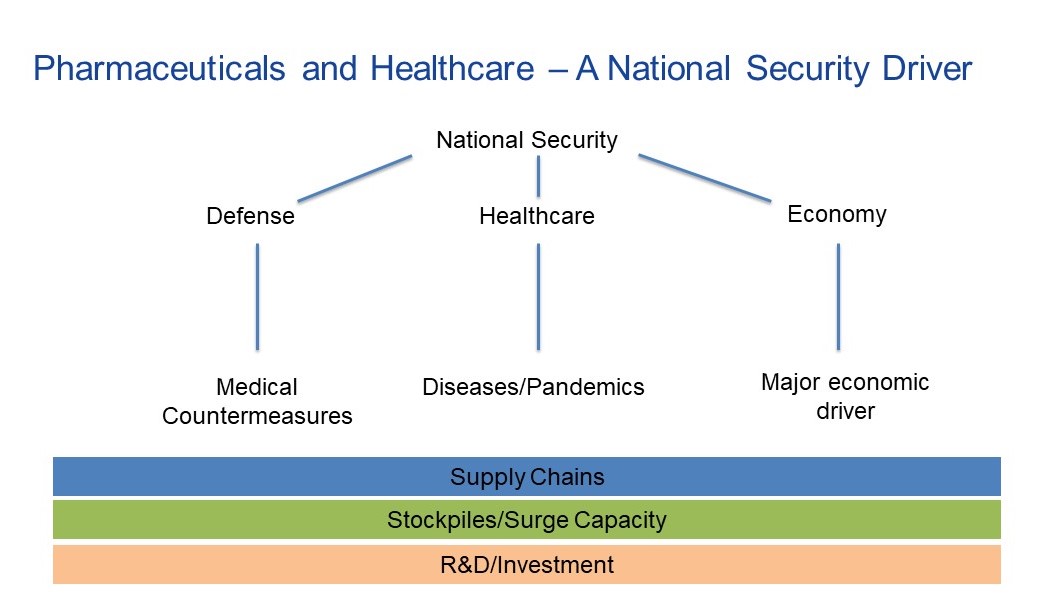This column was originally published on Roger Waldron’s blog at The Coalition for Government Procurement and was republished here with permission from the author.
The COVID-19 pandemic and associated domestic shortages of certain healthcare supplies and pharmaceuticals during the initial response have given rise to new perspectives on the status of global supply chains. As a nation, we have lived for years with an increasing sense of limitless abundance. For instance, our shelves were stocked with produce from around the globe, making the supply limits of growing seasons seemingly disappear. Likewise, with the production lines of manufactured items distributed in different countries, we have reaped the rewards of innovation at optimized pricing. Although the benefits achieved are a testament to the great breadth of our supply chains, the vulnerabilities uncovered during the pandemic demonstrate a critical underlying national risk associated with that great breadth.
That risk became most evident in the supply chain for healthcare supplies and pharmaceuticals. In the early days of the pandemic, the world faced a shortage of personal protective equipment.
Nowhere to be found were hospital gowns and gloves, surgical masks and respirators, goggles, and face shields. …
By early April [2020], the Strategic National Stockpile for PPE … was essentially depleted. … The decrease in US imports from China was not accompanied by a comparable increase in imports from elsewhere. …
China was the source of most of the increase in US import volumes in the second through fourth quarters of 2020 for most products. Imports of masks and respirators, as well as hospital gloves, also began arriving in significantly increased quantities from Vietnam and Malaysia, respectively.
(Brown, Chad P., “How COVID‐19 Medical Supply Shortages Led to Extraordinary Trade and Industrial Policy,” https://www.ncbi.nlm.nih.gov/pmc/articles/PMC8441910/ (citations omitted)).
Increasingly, federal policymakers have become aware that our public health supply chain is challenged. In the last Congress, representatives of both sides of the aisle introduced legislation recognizing this challenge and our nation’s vulnerability. By way of example, one bill, the “Bring Entrepreneurial Advancements to Consumers Here in North America Act,” contained findings highlighting the fact that the U.S. depends on foreign sources, notably China, for its medical devices and an overwhelming amount of its medicine. The bill called for incentives to be put in place to bring the manufacture of those devices and medicine back to the U.S.The foregoing suggests the reality that, when we consider the important role of these products to the economy and our survival, the integrity and resiliency of the supply chains for healthcare products and pharmaceuticals, fundamentally, is a national security issue. For instance, notwithstanding the nation’s significant dependence (and spending) on foreign sources for healthcare products and pharmaceuticals, according to the Centers for Medicare and Medicaid Services, in 2020, healthcare spending represented 19.7% of the U.S. Gross Domestic Product. Thus, disruption in the supply of these products would have a significant, cascading negative economic impact, but that negative impact would represent only the “tip of the iceberg” of harm to our nation. Without access to these medical countermeasures, sustaining the very health of the nation, from therapies for common maladies to the treatment of complex diseases, future pandemics, and chemical and biological threats, would be put at risk. Finally, from the standpoint of maintaining an active military to prosecute the defense of the nation, disruption in the supply of the healthcare products and pharmaceuticals critical to the medical readiness of the warfighter would present existential challenges. Plain and simple, a military debilitated by illness cannot project the force necessary to defend the nation’s interests.
This discussion is reflected in the figure below. Also depicted are the foundational elements that sustain a strong and reliable public health supply chain for the nation.

Recently, the Department of Health and Human Services issued a one-year report on the public health supply chain and industrial base, in which the agency details its efforts in response to Executive Order 14017, “On America’s Supply Chains,” specifically, “to help make our public health supply chain and industrial base more resilient, diverse and secure,” and to identify “the successes and practical strategies that HHS is implementing to further the U.S. government’s goals for America’s public health supply chain and industrial base.” Among the proposals to address the supply chain here, the report identifies the following:
-
- Standing up a public health industrial base and supply chain management program to support domestic manufacturing.
- Leveraging the Defense Production Act to increase support of public health supply and domestic production activity.
- Identifying the means for sustainable funding for supplies.
- Executing measures to stockpile medical countermeasures.
- Improving end-to-end supply chain visibility.
- Using advanced technologies to assist in competitive manufacturing of supplies.
- Establishing a virtual innovation center to promote collaboration and speed innovation.
- Promoting “on-shoring” and “near-shoring” efforts to efforts to establish reliable, resilient supply sources domestically and with allies.
We intend to explore these efforts in future blogs, but suffice it to say that the approaches, like those identified by HHS, make sense and promise to go a long way toward preparing the nation for the future healthcare challenges that inevitably will come. That these proposals wisely seek to enhance collaboration between government and its suppliers is a welcome sign and a harbinger for success. To that end, the Coalition supports these initiatives to promote not only common-sense acquisition, but also the common defense of our nation.






